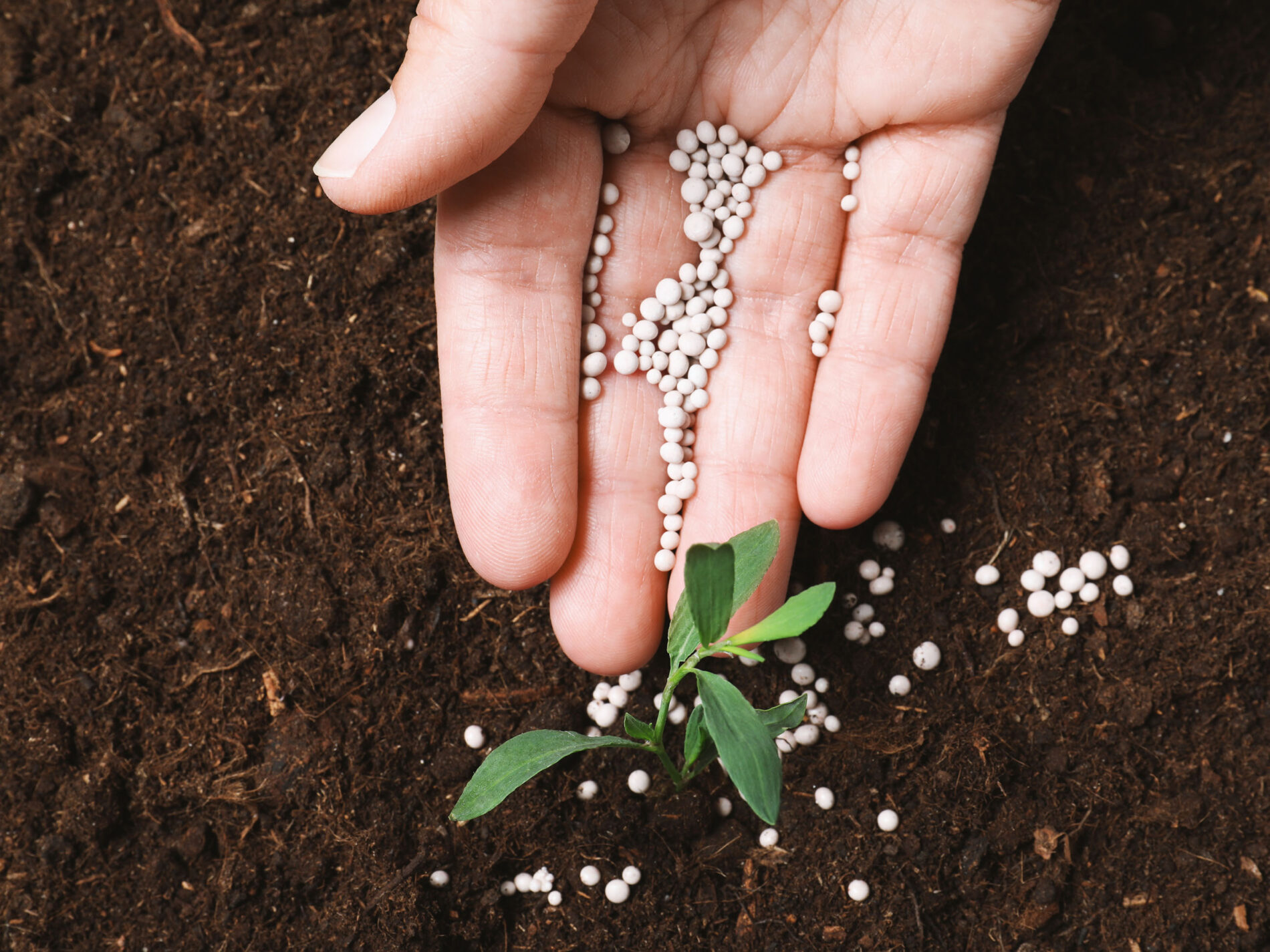Did you know that the cold season is hard on the garden soil? Over the winter, nutrients are washed out of the soil in large quantities, turning it into a nutrient-poor subsoil.
If plants and vegetables are to develop vigorously and blossom in full glory, these nutrients must be returned to the soil. This requires plenty of sun and water – and you can also help out with fertiliser. In this article you will learn what is important when fertilising and which different fertilisers are available.
When is the best time to fertilise your garden?
With the return of the first frost-free days, the preparation time for nutrient-rich soils begins. There is no specific date for this, as the time varies both regionally and depending on the weather. One thing is clear, however: in order to soon be able to enjoy a beautiful garden, the beds and the soil must be prepared before fertilising.
How to prepare your soil for fertilising
To ensure that the soil and the beds can absorb the fertiliser and its nutrients, they must be cleared of any residues. These include:
- removing old parts of plants
- cutting back woody plants
- removing weeds
- loosening the soil
It is not necessary to dig up the soil completely. However, you should loosen the soil carefully. It is important not to damage the roots of perennial plants.
The different kinds of fertiliser
Prepared soil is usually fertilised about two weeks before replanting. If you have beds or soils containing perennial plants, you can fertilise them directly during bed preparation.
If you use a universal product from a specialist shop, you should always follow the manufacturer’s instructions, for example to avoid overfertilisation. There are also home-made fertilisers such as compost or horn shavings that you can mix into the soil.
Here is a short list of fertilisers and their properties:
- Cow and horse manure: highly balanced nutrient content. Furthermore, this type of fertiliser contains a high amount of fibre, which enriches the soil with humus.
- Calcium cyanamide: use before the actual fertilisation to stabilise the pH value of the soil. This supplies plants with nitrogen evenly and sustainably.
- Organic fertiliser: consists of natural raw materials that meet the nutrient requirements of all plants. Its slow and lasting fertilising effect is a great advantage.
- Liquid fertiliser: ideal for potted plants because it is administered directly with the water. Also good for tomatoes, potatoes and all root vegetables.
- Epsom salt: used for acute magnesium deficiency. Because Epsom salt is highly soluble in water, this fertiliser is suitable for spraying directly onto leaves and plants.
Compost as all-time weapon
Compost has a generous spectrum of organically bound minerals. Therefore, rotted garden waste is ideal for enriching your garden soil with nutrients. However, heavy feeders such as tomatoes or cabbage plants need an additional supply of nutrients in early summer and are supported with horn meal. Note, however, that compost is not a suitable choice for chalk-sensitive plants, as its pH content will damage them.
Conclusion
To ensure that your garden soil has plenty of nutrients, it must be supplied with sufficient nutrients in spring. Especially because the growth phase plays an essential role, all gardeners should attach importance to a nutrient-rich soil.
Moreover, plants also need nutrients during flowering. For example, potted plants need regular fertiliser to ensure that they are supplied with sufficient minerals and nutrients. And the most important thing: don’t lose the joy of gardening 😉











What do you think?